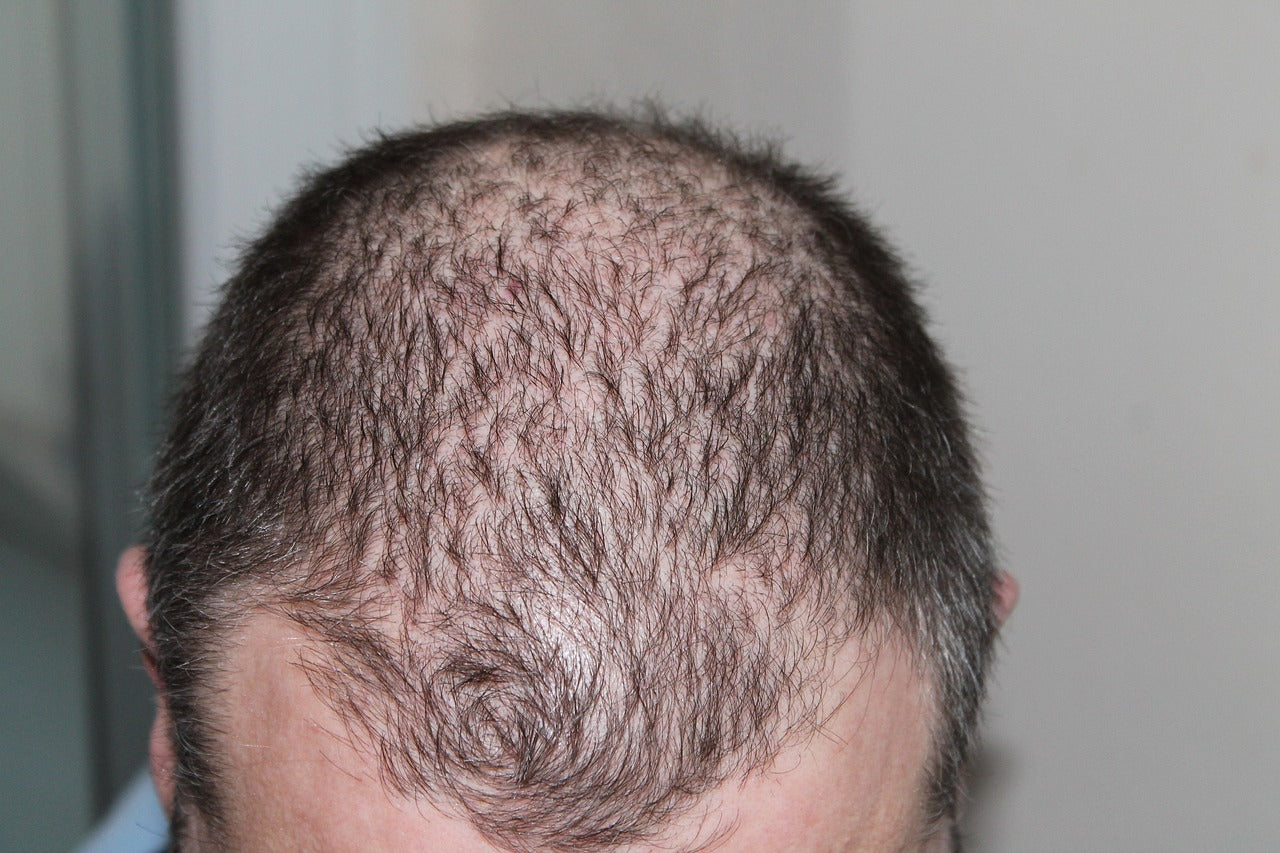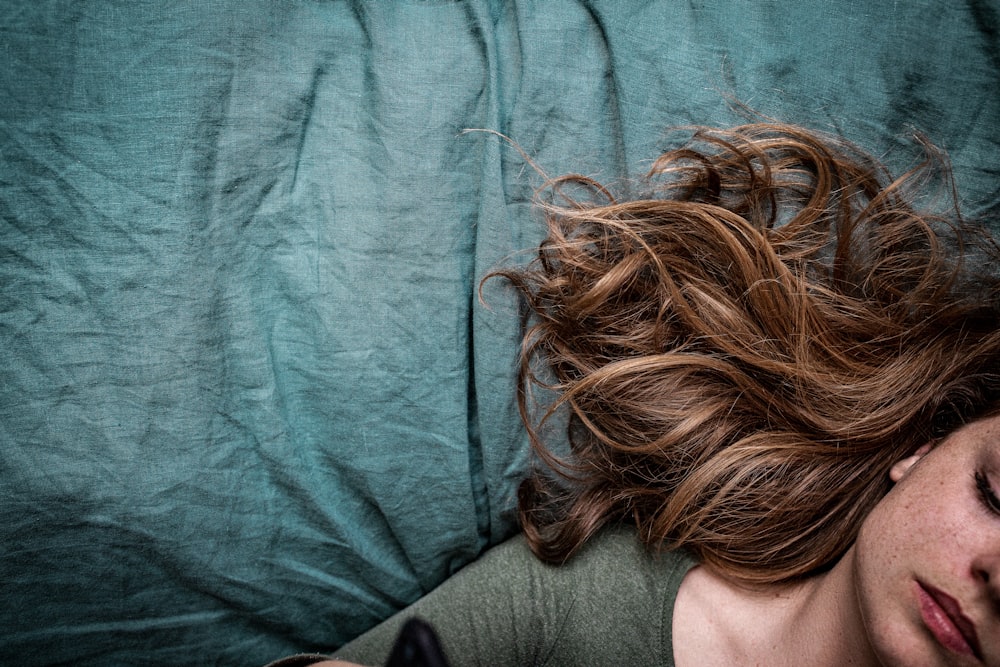Hair loss is a pervasive concern that transcends gender, age, and cultural boundaries. Nowadays, it is impacting millions of individuals worldwide. Beyond the aesthetic aspect, the psychological toll it takes on people is deep. It can significantly affect one's self-esteem, confidence, and overall quality of life. Androgenetic alopecia is a genetic condition that can affect everyone and so they start having hair loss as early as their teens or early 20s.
Androgenetic alopecia is a problem that many people face, more than you may think. Approximately 85% of men and 33% of women will encounter alopecia at some stage. Globally, around 35 million men and 21 million women undergo hair loss. In this post, we will talk about the root causes of hair loss, its symptoms, and strategies for prevention and management.
Hair Growth | How Does Hair Grow?
Let's break down the basics of how our hair goes through different stages of growth. This process is within hair follicles, those small structures nestled in the skin.
Anagen Phase (Growth)
During the anagen phase, the hair follicle is in an active growth state. This is when cells within the hair root undergo rapid division to facilitate the development of new hair. The duration of this phase can vary widely among individuals, like two to seven years. The length of this phase also influences how long an individual's hair can grow.
Catagen Phase (Transition)
The catagen phase marks the transition from active growth to a temporary halt. Lasting only a few weeks, this phase sees the hair follicle contract and detach from its blood supply. As the growth comes to a standstill, the follicle readies itself for the next cycle of renewal.
Telogen Phase (Resting)
In the telogen phase, the hair takes a hiatus from active growth. Fully formed but not elongating, the hair remains in place for approximately three months. About 10-15% of hairs are in this resting stage at any given time. It contributes to the overall balance of the hair growth cycle.
Exogen Phase (Shedding)
This is the natural shedding of hair to make way for new growth. On average, individuals lose around 50 to 100 hairs daily as part of this continuous process. Shed hairs are promptly replaced by emerging ones entering the anagen phase and makes a cycle of renewal.
How Do We Loss Hair | A Natural Occurrence?
Hair grows all over the human body except in certain areas like the palms, soles, eyelids, and belly buttons where many hairs are so fine that they are nearly invisible. It is primarily composed of keratin, a protein produced in hair follicles on the outer layer of the skin. As new hair cells are generated, old cells are pushed out through the skin's surface at a rate of approximately 6 inches per year. The visible hair is essentially a string of dead keratin cells.
On average, adults have about 100,000 to 150,000 hairs on their heads and may lose up to 100 hairs daily, which is usually not a cause for concern. At any given time, around 90% of the hair on the scalp is in a growth phase. Each follicle undergoes a life cycle influenced by factors such as age, health, and various other conditions. This cycle is divided into three phases (as we mentioned before):
- Anagen: The active growth phase, lasting 2 to 8 years.
- Catagen: A transitional phase lasting 2 to 3 weeks.
- Telogen: A resting phase lasting about 2 to 3 months.
- Exogen: The shedding phase, replaced by new ones entering the Anagen phase.
What is Alopecia? What Are Its Types?
Alopecia is a term used to describe hair loss. It can happen for various reasons, such as ageing, genetics, or health conditions. There are different types of alopecia, each with its own characteristics. For instance, androgenic alopecia is linked to genetics and can affect both men and women.
Family Traits and Hair Loss (Androgenic Alopecia)
Androgenic Alopecia is when your genes play a role in hair loss for both men and women. In men, it's known as male pattern baldness, starting with a receding hairline and losing hair from the crown. Women, with female pattern baldness, notice overall thinning, usually in their 40s or later.
Thinning Hair with Age (Involutional Alopecia)
As people get older, their hair naturally becomes thinner, a process called Involutional Alopecia. This happens because more hair follicles take a break, and the hairs left become shorter and fewer.
Sudden Loss and Complete Baldness (Alopecia Areata and Universalis)
Alopecia Areata is a condition where hair falls out in patches, often starting suddenly in kids or young adults. In some cases, it might lead to complete baldness (alopecia totalis). Alopecia Universalis takes it a step further, causing all body hair, including eyebrows and eyelashes, to fall out.
Hair Pulling and Temporary Thinning (Trichotillomania and Telogen Effluvium)
Trichotillomania is a psychological disorder, usually seen in children, where someone can't stop pulling out their hair. Telogen Effluvium is when many hairs take a break at the same time, leading to temporary hair thinning due to changes in the growth cycle.
Common Hair Loss in Black Women (Central Centrifugal Cicatricial Alopecia):
Central Centrifugal Cicatricial Alopecia is the most common type among Black women. It often starts as a small bald spot in the middle of the scalp, growing over time.
Permanent Loss from Scars and Tight Hairstyles (Scarring Alopecias and Traction Alopecia)
Scarring Alopecias cause permanent hair loss due to scarring from skin conditions like acne. Traction Alopecia happens when hairstyles, like tight braids, lead to permanent hair loss.
Most Common Causes of Hair Loss and Androgenetic Alopecia
Genetic hair loss, also known as androgenetic alopecia, is characterized by the gradual thinning of the hair. Its significance lies in being the most prevalent cause of hair loss in both men and women which affects a substantial portion of the population. This hereditary condition disrupts the normal growth cycle of hair follicles and result in the gradual miniaturization of hair strands and, consequently, noticeable hair loss over time.
Common Causes of Hair Loss
Androgenetic alopecia, the primary culprit behind persistent hair loss, is influenced by a range of factors that extend beyond mere genetic predisposition.
- Hormones: Abnormal levels of androgens, male hormones produced by both men and women, play an important role in triggering androgenetic alopecia. Imbalances in these hormones disrupt the normal growth cycle of hair follicles and lead to hair thinning and loss.
- Genetic Factors: Genes inherited from both male and female parents contribute to an individual's susceptibility to male or female pattern baldness. It is widely acknowledged that androgenetic alopecia often has a genetic component.
- Environmental Stressors: Stress, illness, and childbirth can induce temporary hair loss. Additionally, fungal infections like ringworm, and stress-induced hair loss can be reversible with appropriate measures.
- Medications: Certain medications, including chemotherapy drugs, blood thinners, beta-adrenergic blockers for blood pressure control, and birth control pills, may lead to temporary hair loss as a side effect.
- Physical Trauma: Burns, injuries, and exposure to X-rays can result in temporary hair loss. In most cases, normal hair growth resumes once the injury heals, unless scarring occurs.
- Autoimmune Diseases: Autoimmune diseases, such as alopecia areata, occur when the immune system mistakenly targets hair follicles. While hair may grow back in most cases, it may initially appear fine and lighter in color before returning to normal.
- Cosmetic Procedures: Overuse of cosmetic procedures, like frequent shampooing, perms, bleaching, and dyeing, can contribute to overall hair thinning. While these actions can make hair weak and brittle, they typically don't lead to permanent baldness if the underlying problem is resolved.
- Dietary Factors: Diets low in protein or severely calorie-restricted can cause temporary hair loss. Deficiencies in essential vitamins (A, B, C, D, E) and minerals (iron and zinc) are also associated with hair loss.
- Medical Conditions: Various medical conditions, including thyroid disease, lupus, diabetes, iron deficiency anemia, and eating disorders, may contribute to hair loss. Treating the underlying condition often results in hair regrowth, unless scarring has occurred.
Symptoms and Progression of Androgenetic Alopecia
Common Symptoms:
Androgenetic alopecia manifests through various symptoms that gradually become noticeable over time. These symptoms include:
Gradual Hair Thinning: One of the initial signs is the gradual thinning of hair, particularly at the crown or the temples. This often leads to an overall reduction in hair density.
Receding Hairline: Men commonly experience a receding hairline, forming an "M" shape, while women may notice their hairline gradually moving backwards.
Widening Part: Women, in particular, might observe a widening part in their hair, as the hair at the centre of the scalp becomes sparse.
Increased Visibility of Scalp: As the condition progresses, the scalp becomes more visible due to the diminishing coverage of hair.
Miniaturization of Hair: Hair strands undergo a process called miniaturization, where they become finer and shorter with each growth cycle, eventually leading to the appearance of thin, wispy hair.
Progression Over Time: Androgenetic alopecia follows a predictable pattern of progression, and understanding this timeline can help individuals identify and address the condition effectively:
Early Signs: In the initial stages, individuals may notice increased hair shedding and a subtle thinning of hair. These signs often go unnoticed or are attributed to normal aging.
Widening of the Affected Area: As the condition advances, the affected areas experience more pronounced thinning, leading to a noticeable reduction in hair volume. Men may witness a receding hairline and thinning at the crown, while women may observe a widening part and overall thinning.
Further Hair Loss: Over time, the affected areas continue to lose hair density, and the miniaturisation process intensifies. This results in the visibility of the scalp, especially in the frontal and crown regions.
Established Pattern: The distinct male and female patterns of androgenetic alopecia become more evident. Men may develop a more pronounced "M" shape in their hairline, while women often retain their frontal hairline but experience significant thinning at the crown.
Advanced Stages: In advanced stages, the hair loss may become extensive, leading to significant balding in certain areas. Despite the widespread thinning, a rim of hair along the sides and back of the scalp (known as the "permanent zone") tends to persist.
Prevention and Management of Androgenetic Alopecia
We can combine preventive measures, medical treatments, and positive lifestyle changes to manage and slow down hair loss effectively.
Prevention Tips:
Healthy Diet: Ensure a balanced diet rich in essential nutrients, including vitamins (A, B, C, D, E) and minerals (iron, zinc), essential for maintaining hair health.
Gentle Hair Care: Avoid aggressive styling practices, such as tight hairstyles, frequent heat styling, and excessive chemical treatments that can weaken hair and contribute to breakage.
Stress Management: Practice stress-reducing activities daily, such as meditation, yoga, or deep breathing exercises, to mitigate the impact of stress-induced hair loss.
Regular Exercise: Engage in regular physical activity to promote overall well-being, improve blood circulation, and support a healthy scalp environment.
Avoid Smoking: Smoking has been linked to hair loss, so quitting or avoiding smoking may contribute to better hair health.
Medical Treatments and Therapies:
Minoxidil: Over-the-counter topical minoxidil is a common treatment that can help slow down hair loss and promote regrowth in some individuals.
Finasteride: Prescription oral medication, finasteride, is available for men and works by inhibiting the action of the hormone dihydrotestosterone (DHT), which is associated with androgenetic alopecia.
Low-Level Laser Therapy (LLLT): LLLT devices, such as laser combs or helmets, are designed to stimulate hair follicles and may contribute to hair regrowth.
Platelet-Rich Plasma (PRP): PRP therapy involves injecting a concentrated form of the patient's blood into the scalp to promote hair growth.
Lifestyle Changes for Hair Health:
Adequate Sleep: Ensure sufficient and quality sleep, as inadequate sleep can contribute to hormonal imbalances that may impact hair health.
Hydration: Stay well-hydrated to support overall health, including that of the hair.
DHT-Blocking Shampoos: Use shampoos containing DHT-blocking ingredients to help mitigate the impact of the hormone associated with androgenetic alopecia.
Regular Scalp Massage: Gentle scalp massage can stimulate blood circulation and contribute to a healthier scalp environment.
Consultation with a Healthcare Professional: For personalized advice and treatment options, consult with a healthcare professional or dermatologist specializing in hair health.
RU58841, a Well-known, Potent Anti-androgen
RU58841, a potent anti-androgen, has garnered attention for its potential in addressing hair loss concerns.
It inhibits dihydrotestosterone (DHT), a hormone associated with hair loss and baldness. It has now become a popular choice for those seeking effective alternatives to combat androgenetic alopecia. People use it to promote hair regrowth and maintain a fuller, healthier appearance. You can also consider learning more about the benefits of RU58841 as part of your hair care routine in our store. Simply visit our store MV Supplements, and learn more about it.






Leave a comment
This site is protected by hCaptcha and the hCaptcha Privacy Policy and Terms of Service apply.